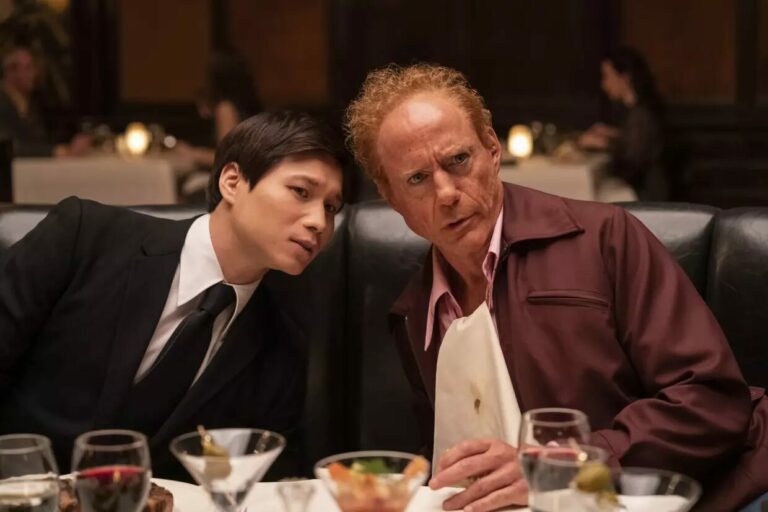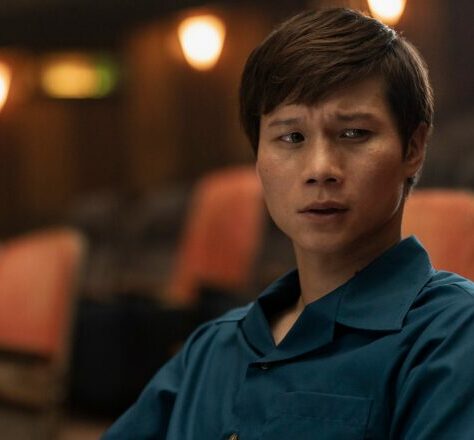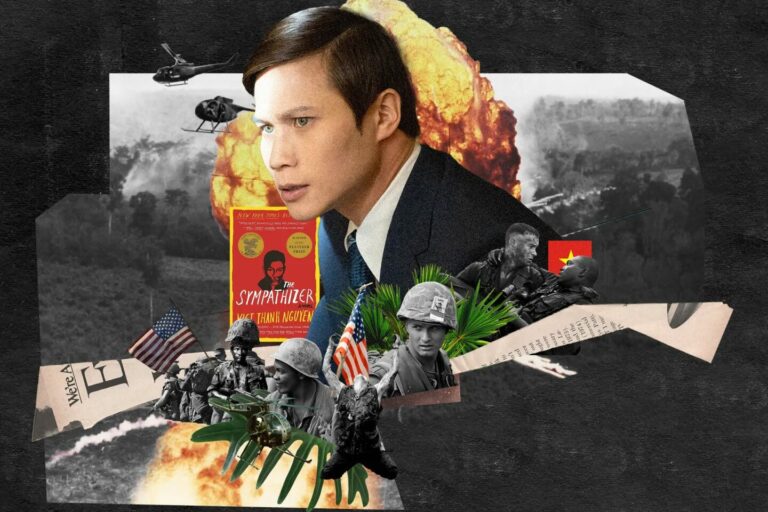An-My Lê and Viet Thanh Nguyen share a conversation about An-My Lê: On Contested Terrain, a photography exhibit about the complexity of war.
The dialogue below comes from a discussion between An-My Lê and Viet Thanh Nguyen that began on February 19, 2019 as part of a program at San Francisco State University and continued through October 2019. This excerpt has been condensed and edited for clarity. The full dialogue appears in An-My Lê: On Contested Terrain, copublished by Aperture and Carnegie Museum of Art.
Viet Thanh Nguyen: I was drawn to your work from your book Small Wars [2005]—specifically, the series Viêt Nam and 29 Palms—because I think it displayed visually, even without the benefit of a narrative, many of the preoccupations that I had about how I and so many other Vietnamese refugees were defined by our exile and return to Vietnam. I thought your images brilliantly captured that in very subtle ways. I appreciate your subtlety, because so many of the other ways in which the Vietnamese have appeared in the American imagination have not been subtle. And so many of the ways in which the Vietnamese themselves have imagined their own history, narratively and visually, have not been subtle either. From the conceptual, technical, and aesthetic perspective, I just thought your work really resonated with my own concerns.
An-My Lê: For me, it’s always about complicated beauty and about showing something, but then pulling you back in a different way. I’m always looking for the fault line [. . .] I think I do photography because I want to understand things and see things for myself, and also bring truth to power, and witness something. I always feel like I’m excited to go somewhere new, to ask new questions, and to perhaps get an answer. So I just continue and even when things don’t work out, something good pops up and it encourages me to continue. I don’t do any kind of radical type of photography. I work with a large-format view camera, and it’s pretty much what we call straight photography or documentary-style photography. It’s within a tradition, and I just feel emboldened to continue the work.

VTN: I think on the question of how you delve into the complexity of issues that generate so much passion, the only way to do that, for me, is to allow myself time. The Sympathizer [2015] took two years to write, but those two years came at the end of twenty years of thinking through these issues. And likewise, I wrote a short-story collection called The Refugees [2017] that took seventeen years. I wrote another book called Nothing Ever Dies [2016] that deals with the memory of the war, that took fourteen years of sitting with these ideas, many of which had already been dealt with relentlessly in the Vietnamese and American imaginations. What I was dealing with was not new either, but it took time to think through it, and to try to see it in ways that most people could not.
When you’re dealing with a subject like war, all kinds of terrible things are going to come up and have to be dealt with. I think it also took a long time for me to process my feelings about many of these terrible things, like death and atrocity, and how to represent them and the passions they generate. I think that’s why, for a lot of readers, one of the things they tell me quite often is that it takes them a long time to read The Sympathizer. I deliberately wrote that novel in such a way that the language is dense, that it requires the reader to stop and think through the words. I try to slow down time through the language. As a writer, my challenge is to make the writing interesting enough.

AML: Photographs don’t necessarily require you to do that. You could go to a show and just walk past a picture, or you can flip through a magazine, or now we have Instagram and people spend half a second on a photograph. The experience of images is so superficial these days, and people tend to make pictures that can be digested easily. I’m not interested in that. I want a photograph that is layered, that suggests multiple meanings, and that is complicated. Hopefully, people will spend time and look and wonder about what everything means. Hopefully, they’ll walk away with more questions or interest in finding out something else about the world that was suggested.
I think empathy is also important. I think being a mother made me much more empathetic, and being a teacher as well. Becoming a mother made me a better teacher and a better artist, in the sense that you see difficulties that people have that are not your own, and it makes you have more perspective on what other people are going through. It would be silly to think that something simple, like a reenactment, could help me understand something about the other side [in war], but it puts me in a position where I can have that intellectual query in my head.

VTN: In the Small Wars series, there’s an image where you photographed yourself in the foreground as a Viet Cong sniper, with American soldiers in the background you are about to ambush. You capture this moment in the American imagination of what the trauma of the war signified for Americans being bushwhacked, especially by a Vietnamese woman guerrilla Viet Cong, and all of this is completely bound up in American mythology that extends from the Vietnam War all the way back to at least the Indian Wars, and then even further back to how Americans themselves occupied that same position, relative to the British redcoats they were fighting. I think all of that is layered in that image.
AML: Performance is definitely part of my subject, and I often ask someone to do something again or do something that I have in mind. Unfortunately, the situation can easily become self-conscious. I realize that being able to do this is a great freedom I have as an artist. This sort of process would constitute a breach of ethics in photojournalism. I think there is a difference between narrative performance and photographic performance, but in both cases one assumes that the author is a type of director. It disturbs people that the reenactors are performing a controversial war for themselves and not for a huge Hollywood production. It has been argued that the presence of cameras normalizes and creates a sense of a just cause, a more tasteful enterprise. That is troubling to me.
As an artist, I am interested in worlds that are complete, inclusive, and integral while not necessarily without conflicts. The reenactors, Vietnam, or the American military-industrial complex are for me fascinating “worlds” with particulars. Whether we are talking about cultural geopolitical issues or military activities, I am always looking for something that is utterly photographic.

VTN: My challenge as a writer is to both have this broad landscape in my mind—whatever France or Vietnam or America is, and all the various images and symbols that people think of when you invoke these places—but then also to look at very specific landscapes, like what a street looks like in Vietnam when it’s thronged with motorbikes, or what a scene looks like when you’re in someone’s house and sitting down for dinner, or what a battlefield landscape might look like. I visit these landscapes, but sometimes I have to imagine them as well. I’ve been to many battlefields and graveyards, but these are landscapes where history has already happened, so I have to imagine what it’s like when battles are being fought there.
As a writer, I have to put all this down into words. In your case, sometimes the history is explicit; it’s being created in the photographs, like the shot from 29 Palms with the armored vehicles. But other times, you’re clearly shooting things with the awareness that there is history that’s not seen in the photograph, that’s layered underneath.

AML: I think that scale can also help create a complexity and allow for layering in the image. Scale allows me to talk about something that is small within a larger context, and it allows people to be drawn in, in many different ways. 29 Palms did that because it allowed me to actually pull back. Pictures that I saw growing up in Vietnam were so close up and they were about the personal stories. I was more interested in the military activities as they splayed over a landscape. It’s about context, and by stepping back you need to take responsibility for the action. You can’t just focus on the action. You need to take responsibility for your origins, for your history.
VTN: One thing I’ll say about your work is I think that even though you depict the American military, I don’t see that necessarily as an endorsement. I think some people get confused and think that if you take pictures of the American military, you must support the war machine. That’s not the same thing.
AML: Oh, no. People get confused, yes. I have had a number of people come up to me and tell me I’m glorifying the military. I don’t see it that way. I think people also confuse beauty with a more complicated beauty because the pictures seem beautiful, and sometimes a huge piece of steel is very beautiful. Those aircraft carriers [in Events Ashore] are amazing. Why should I make them uglier than they are?

VTN: There’s that really interesting tension. I admire your photographs for their beauty—both in terms of what they capture and also the technical beauty that goes into composing them and capturing these scenes. And yet behind them are these really horrible references to combat and attacks and heavy weaponry and things that are really fatal to human beings. The beauty of the photographs makes us recognize what’s compelling in these terrible things, what draws human beings to doing and seeing these terrible things again and again.
I think in the next fifty years, some things will stay the same and some things will change. What’s going to stay the same? Is racism going to go away? Is the military-industrial complex going to go away? Is war going to go away? No, they’re not going to go away. They’re not going to go away, because these things are part of the United States. They are deeply embedded in our country. What are going to change are the people [in this country]. There are new populations coming in that are not the same as previous generations of immigrants and refugees and colonized people and Natives and Indigenous people. They’re going to come in with new histories, new problems, and new struggles. We have to listen. Whether we’re artists, or academics or activists, our practice has to be transformed by paying attention to the histories that these people bring with them.
AML: Maybe I don’t want to get too attached to a person or a specific house because those things are so impermanent. I think the landscape, even though it changes over time, it’s always there in a different form. In a way, that’s why I first turned to the landscape in [my series] Viêt Nam, because I felt that the people were different. John Brinckerhoff Jackson wrote so eloquently about this: “the beauty that we see in the vernacular landscape is the image of our common humanity: hard work, stubborn hope, and mutual forbearance striving to be love.” I felt that I didn’t recognize anything in Vietnam; it didn’t make sense to me at all. Whatever it is I was looking for, it was in the landscape.

It’s about being curious about something. I think that if you know what you think before you start a project, it probably won’t be so great. I think about my work in relation to various modes of storytelling, in relation to representations out there that have affected me and informed me. What is surprising? What hasn’t been covered? What might I want to see? I need some kind of motivation. Robert Frost said it so well: “No surprise for the writer, no surprise for the reader.” Generalization is the norm these days. It’s as easy to read a headline as it is a bumper sticker. The concern for me is how to walk in and assess a situation. I want to try to reveal the moment without diminishing or simplifying it. I am thrilled when I feel that I have reached this push-and-pull dynamic within a picture.


